History of The Majestic Theatre
The Majestic theatre is rare as one of the few pre-World War II picture theatres remaining in Queensland that have not been demolished or adapted to other uses. It is also Queensland’s longest continuously operating picture theatre and the only theatre in the world that continuously screens silent films.
The Majestic Theatre at 3 Factory Street Pomona, which was originally built as a social hall with attached shops in 1921, has been promoted as the oldest authentic silent movie theatre in the world, and the longest continuously operating movie theatre in Australia. Although the building was extensively refurbished in 2006, the timber and fibrous cement sheeted building is still a rare, and functional, example of a pre-World War II country hall that was converted into a theatre.
The land on which the Majestic Theatre stands was purchased in January 1921 by Clara McDonald, who also financed the building of the hall.
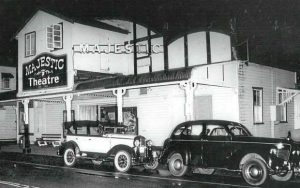
The hall was designed to serve several functions, primarily as a social centre for the township and over time it served as a venue for balls, concerts, weddings, and even boxing matches. Constructed of unseasoned milled hardwood, the hall was about 12 metres wide by 18 metres long, with seating for 198 people. It included a sprung dance floor of ¾ inch crow’s ash timber, still extant today, and was raised on stumps to avoid flooding. On the left hand side was the Majestic Café, which also served as general store and the right hand side’s shop accommodated at various times a dentist, radio shop, and a mechanic. In the mid 1920s a supper room was added to the long southeast elevation of the hall, and this section was later extended to the northeast.
Travelling Picture Show Men initially called at the Majestic Hall to show silent movies, but in 1923 the hall was leased by Mrs Osborne to Harold ‘Picture’ Page, who obtained a theatre license that year. Herbert Page (unrelated), of Page Furnishers, was called ‘Blue Shirt’ Page, to distinguish him from Picture Page.
Reportedly, the early silent films in Pomona were accompanied by a schoolgirl playing random music on a pianola. On 28 April 1931 the first talkie, or movie recorded with its own soundtrack, was shown at the hall, and around 1933 the hall’s lease was transferred to Ernie Bazzo, who upgraded the hall to a theatre by adding a small gallery and a bio box. A number of local social functions were shifted to the new Pomona Memorial Hall during this decade. In the late 1930s Bazzo used seating from the Princess Theatre in South Brisbane to replace the existing canvas sling seating. The Pomona Talkie Company was registered on 1 October 1935, and involved Errol Osborne, Ernest Bazzo, and Charles S. Thomson. Bazzo also owned the nearby Central Garage, and worked as a mechanic during the day, operating the theatre at night.
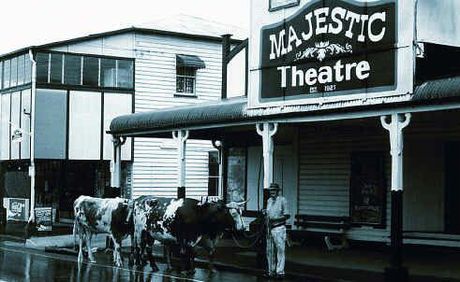
Many theatres were built with attached retail spaces, including a café or milk bar for patrons, and a cantilevered street awning. As an alternative to purpose-built theatres, halls were regularly converted into picture theatres by erecting bio-boxes, installing a gallery, or adding new seating and sound equipment. Halls usually contained a supper room along the length of one side, for light meals during balls and other social functions.
From the 1910s until the advent of television rural theatres provided an important social service to people in the surrounding area, including stimulus for the imagination, relief from isolation, and a link with the wider community in Australia and with United States’ popular culture. Local picture theatres were also used as social venues for school concerts and dances, and many had level, sprung dance floors.
Its busiest period was during World War II, when a Tank Attack (anti-tank gun) Regiment was stationed near Pomona. The troops had priority for seats, and local civilians were irate when they could not get in. Often, people would watch from outside, standing in the middle of the road, which was then the original Bruce Highway. The theatre remained popular after the war, and throughout the 1940s to the 1960s films were shown on Wednesday and Friday evenings and Saturday afternoon, with a cartoon and two movies for four shillings and sixpence.
In 1956 the original projector equipment was replaced with equipment from the Tivoli Theatre in Brisbane.
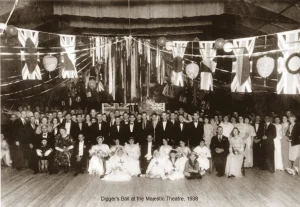
In 1973 Ron and Mandy West introduced the Travelling Film Festival, which featured first-release and avant garde films, to the Majestic Theatre, and the festival screened at Pomona until 1994. The Wests purchased the theatre in 1974. The Majestic remained the Noosa Shire’s only picture theatre until 1984. The film projection equipment was replaced in 1980, and a DVD system was installed in 2003. During the 1980s the theatre also operated as a video hire outlet to help keep it viable. In 1987 Ron West was asked to show a silent movie to a group of travel agents, and since he possessed a print of the 1926 film The Son of the Sheik, starring Rudolf Valentino, he ran the film and accompanied it with his restored Wurlitzer pipe organ, making up the music as he went along. Word got around, and after several months the Wests decided to only show silent movies at the Majestic, which gained world-wide recognition as a silent movie house. Six days a week, the Majestic was open to school visits and coach loads of Australian and international tourists. The most popular silent films shown since 1987 include The Son of the Sheik, the original Raymond Longford production of Dad and Dave in On our Selection, an Australian Production.
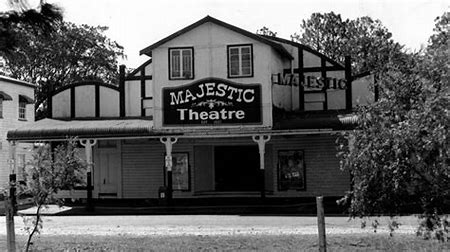 The current organ console, the only one in a Queensland theatre, is located to the left of the stage and is an electrical 1937 Compton. It was bequeathed to the theatre by the Linnet family of Brisbane on the passing of Blaire Linnet. It comes from the Regal Cinema in South Shields, Chester England. It’s rebuilding commenced in 2006 by John Brooks and Don Clark. The pipe chamber, which also contains a bank of 1930s electrical organ switches from the Theatre Royal in Halifax, is located within the former supper room extension on the south east side of the theatre. Three ranks of Christie pipes in the chamber were originally from a theatre in Dunedin, New Zealand, and were owned by a church in Sydney before they were acquired by Ron West in 1985. Other ranks of pipes have been obtained, with the hope of eventually having 12 ranks. West did not just collect pipe organ parts – the timber organ grill that separates the organ room from the auditorium is made of Oregon pine, and comes from the Roxy Theatre in Parramatta. It took six and a half years to restore the organ and it was launched on 6th July 2019 to a sell out audience.
The current organ console, the only one in a Queensland theatre, is located to the left of the stage and is an electrical 1937 Compton. It was bequeathed to the theatre by the Linnet family of Brisbane on the passing of Blaire Linnet. It comes from the Regal Cinema in South Shields, Chester England. It’s rebuilding commenced in 2006 by John Brooks and Don Clark. The pipe chamber, which also contains a bank of 1930s electrical organ switches from the Theatre Royal in Halifax, is located within the former supper room extension on the south east side of the theatre. Three ranks of Christie pipes in the chamber were originally from a theatre in Dunedin, New Zealand, and were owned by a church in Sydney before they were acquired by Ron West in 1985. Other ranks of pipes have been obtained, with the hope of eventually having 12 ranks. West did not just collect pipe organ parts – the timber organ grill that separates the organ room from the auditorium is made of Oregon pine, and comes from the Roxy Theatre in Parramatta. It took six and a half years to restore the organ and it was launched on 6th July 2019 to a sell out audience.
In the past, stage drapes, furnishings and equipment were salvaged by Ron West from the Regent, Wintergarden, Her Majesty’s theatres in Brisbane, The Boomerang Theatre and the Wintergarden in Ipswich.
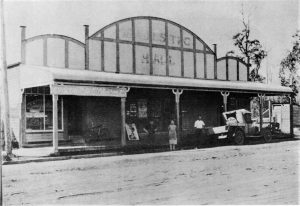 In late 2006 the land on which the theatre stands was transferred to Pomona Progress Art Tourism Inc. Now known as Pomona Arts Inc. In September 2006 the first team of Skill-Centred Community Jobs Project workers (whose wages were paid by the Queensland Government), began an upgrade of the theatre, which reopened in mid 2007. Grants were also provided by the Noosa Shire Council and the Federal Government. Upgrades included restumping the building with steel, replacing the roofing iron and correcting the roof’s sag with steel reinforcement, bracing walls, refixing much of the exterior cladding, and replacing interior linings and the ceiling. The fixed seating was removed and was replaced with moveable seating built by local Pomona manufacturer Page Furnishers, and the organ chamber was rebuilt and extended. The roof of the stage was raised to match the roof of the auditorium, the floor of the dressing room was raised to stage level, and new sliding doors were installed at the rear of the building to allow outside/inside shows. The former Majestic Café was refurbished, while the former shop space to the right of the main entrance was refurbished as a modern kitchen. The sprung dance floor was sanded back and oiled, the toilet area was modernised, and a snack and beverages bar was installed in the foyer. New paths and ramps were also added around the building’s exterior.
In late 2006 the land on which the theatre stands was transferred to Pomona Progress Art Tourism Inc. Now known as Pomona Arts Inc. In September 2006 the first team of Skill-Centred Community Jobs Project workers (whose wages were paid by the Queensland Government), began an upgrade of the theatre, which reopened in mid 2007. Grants were also provided by the Noosa Shire Council and the Federal Government. Upgrades included restumping the building with steel, replacing the roofing iron and correcting the roof’s sag with steel reinforcement, bracing walls, refixing much of the exterior cladding, and replacing interior linings and the ceiling. The fixed seating was removed and was replaced with moveable seating built by local Pomona manufacturer Page Furnishers, and the organ chamber was rebuilt and extended. The roof of the stage was raised to match the roof of the auditorium, the floor of the dressing room was raised to stage level, and new sliding doors were installed at the rear of the building to allow outside/inside shows. The former Majestic Café was refurbished, while the former shop space to the right of the main entrance was refurbished as a modern kitchen. The sprung dance floor was sanded back and oiled, the toilet area was modernised, and a snack and beverages bar was installed in the foyer. New paths and ramps were also added around the building’s exterior.
In 2018 solar power was installed and lighting and wiring was overhauled. In 2021 air-conditioning was installed and the theatre celebrated its 100th birthday and the opening of its new bar replacing the existing bar in the foyer which is now used as a merchandise bar. New lighting, carpet for the upper stall and a new sound system have also recently been upgraded and the Green Room has just completed renovation.
"This now is the only authentic silent picture theatre fully operating as a silent picture theatre in the world"
Ron West

Share on Social
The Majestic Theatre is currently owned and managed by Pomona Arts Inc. A not for profit group and is run entirely by volunteers. For more information see our Contact Details Page or send us a message using the Form or Email address in the site footer.
